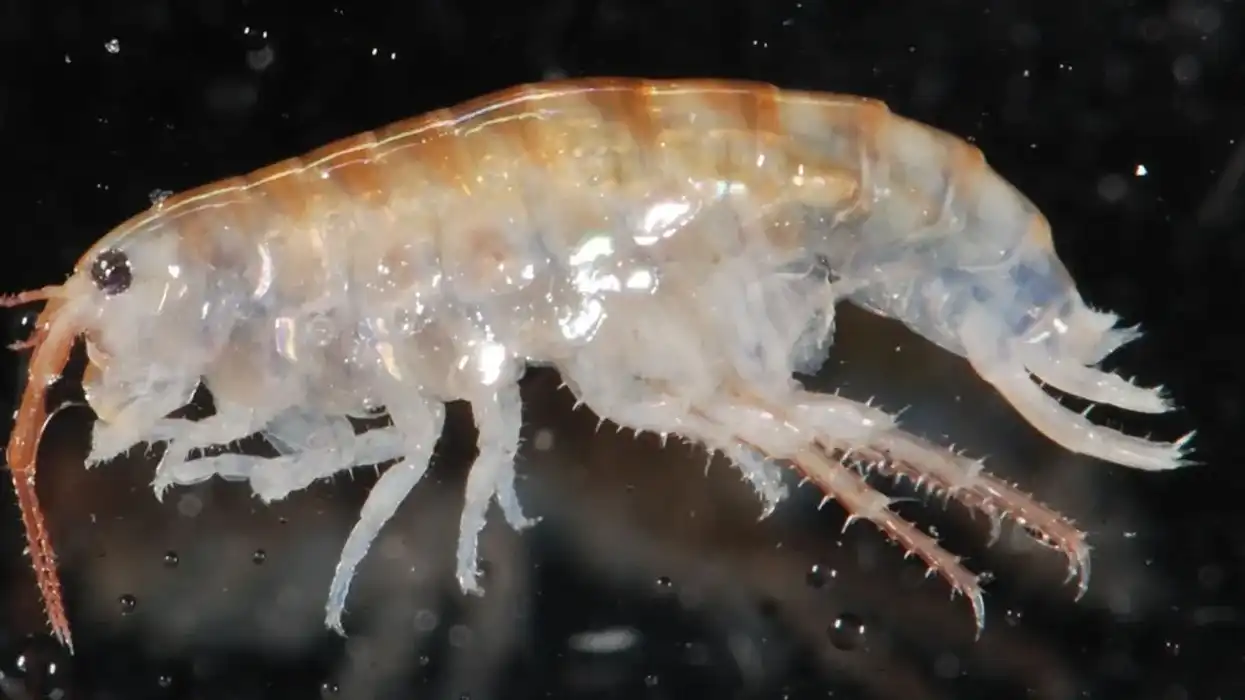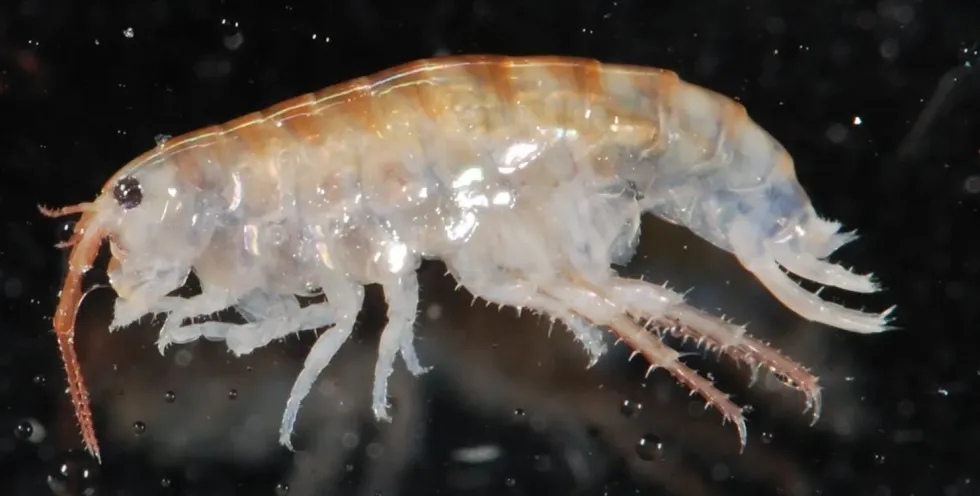Suited to both tropical and subtropical climates, the Chigoe flea (Tunga penetrans) is also popular by other names such as jigger flea, sand flea, bicho de pé, and suthi. All over Latin America, the sand flea is popularly termed the 'foot bug' since these fleas enter the body mostly through the host's foot.
The jigger flea is sometimes mistaken for a mite species known as 'chigger'.
Most noticeable in their parasitic stage, these fleas are popular for Tungiasis, an infestation of parasites. The inflammatory disease can cause severe pain, itching, and lesion on the section of infection.
This flea species is known to feed on a large variety of hosts including rodents, monkeys, dogs, cats, sheep, elephants, donkeys, pigs, as well as humans.
Since Tunga penetrans is common in South and Central America, the Caribbean, sub-Saharan Africa, and Mexico, the disease is a worldwide health concern. Highly endemic regions comprise Brazil, Nigeria, and Trinidad and Tobago.
Although Tungiasis doesn't posit life risks, it can be pretty threatening in the absence of proper prevention and treatment. It is a greatly neglected tropical disease.
Since the flea mostly enters the body via the host's foot or ankle, Tungiasis is more common among rural populations including children who tend to roam barefoot.
Awareness about prevention and treatment is necessary to ensure better public health. Walking with shoes on and spraying insecticides like malathion are some of the preventive measures that reduce the chances of infestations.
Check out some more details about the jigger and don't forget to read through these informative facts about insects like the snow fleas and brown dog tick.
Chigoe Flea Interesting Facts
What type of animal is a Chigoe flea?
The Chigoe flea is a species of parasitic insect belonging to the Hectopsyllidae family. The family is composed of ten distinct Tunga species.
What class of animal does a Chigoe flea belong to?
The jigger has been classified under the Insecta class while it is a member of the Tunga genus.
How many Chigoe fleas are there in the world?
The population of these minute sand fleas is not known due to the lack of quantification data. However, the population is pretty widespread across the world.
Where does a Chigoe flea live?
Endemic areas of Tungiasis include South America as well as Central America, entire sub-Saharan Africa, and the Caribbean. This sand flea can also be found in several regions of Mexico and the West Indies.
What is a Chigoe flea's habitat?
The Chigoe flea is well-suited to sandy regions like beaches where tropical or sub-tropical climates prevail. They can also be spotted in stables and farms.
Who do Chigoe fleas live with?
After entering the adult stage, the jiggers find their way to the body of the host where it normally lives until death. They dwell in colonies which can be commonly termed as an infestation.
How long does a Chigoe flea live?
Normally, fleas have a very short lifespan. Adult fleas can survive for around two to three months but in the absence of a host, they can manage to live for only a few days. The longevity of the jigger flea is mostly from four to six weeks.
How do they reproduce?
The life cycle of Tunga penetrans usually follows four stages. In the first stage, the eggs are laid by the females that take three to four days to hatch.
After hatching the second stage commences where the larvae, in two stages, develop into pupae.
The larvae feed on available organic debris. The pupae remain enclosed in cocoons and these two stages extend for about three to four weeks.
In the final stage, adults emerge out of the cocoons and look for a host for feeding on their blood. While both genders feed on the host's blood, only the females who have already bred burrow into the skin resulting in nodular swellings in the area.
Since the females don't possess any organs that can aid burrowing, they just claw into the skin after clamping with the mouth. Only the posterior region is visible when they penetrate deep into the stratum granulosum.
A female engages in continuous feeding until the abdomen expands to around 0.4 in (1 cm).
Within a span of two weeks, a female discharges around 100 eggs after which it eventually perishes inside the skin while the cycle of the eggs begins. This is why secondary infections such as gangrene, necrosis, and tetanus are very common in cases of Tungiasis, especially when there's a lack of treatment.
What is their conservation status?
The International Union for Conservation of Nature (IUCN) Red List has not assessed the conservation status of the Chigoe flea (Tunga penetrans). Therefore, the species falls under the Not Listed category.
Chigoe Flea Fun Facts
What do Chigoe fleas look like?
We've been unable to source an image of a Chigoe flea and have used an image of a hen flea instead. If you are able to provide us with a royalty-free image of a Chigoe flea, we would be happy to credit you. Please contact us at hello@kidadl.com.

Before burrowing into the epidermis, the jiggers most probably have the common brown-red coloration like most other flea species. However, they're most identifiable when inside the host's skin.
The infection can be identified by a black dot at the central region of the lesion. The lesion looks reddish and swollen and the surrounding area has the appearance of a whitish halo.
How cute are they?
This species is anything but cute. These jiggers are perhaps one of the ugliest-looking insects in the world. They mostly evoke disgust among people.
How do they communicate?
Fleas are tiny animals and it is believed that they communicate through high-frequency sounds and vibrations that are emitted from their abdominal openings. However, some detailed research is still required in this field.
How big is a Chigoe flea?
Among all flea species, the Chigoe flea is considered to be the smallest, measuring just about 0.04 in (1 mm). These fleas are normally smaller than ground beetles measuring 0.02-2.5 in (0.7-66 mm) in length.
How fast can a Chigoe flea run?
The accurate running speed of the species is yet to be deciphered but the sand flea is known to jump and run at great speeds.
How much does a Chigoe flea weigh?
Accurate details about the average weight of the sand flea is unavailable but it is safe to conclude that the species has a negligible weight as it is considered to be the smallest flea in the world.
What are the male and female names of the species?
There are no sex-specific names for Chigoe fleas.
What would you call a baby Chigoe flea?
Depending on the stage of development, the baby of a sand flea is called a larva and then a pupa.
What do they eat?
Both males and females feed on the blood of the host but the females penetrate and attach themselves to the host's skin. The larvae consume organic debris from the surrounding environment. This flea species is known to feed on rodents, monkeys, dogs, cats, sheep, elephants, donkeys, and pigs, as well as humans.
Are they dangerous?
Unlike wheel bugs that are actually beneficial for the environment, these insects are dangerous and must be avoided at all costs. They can cause Tungiasis and other health issues related to the disease. Symptoms include itching, swelling, and irritation on the skin. In case of an infestation, Chigoe flea treatment must be initiated at the earliest possible time.
Would they make a good pet?
These sand fleas can never be good pets simply because these parasites can be detrimental to the health of animals and humans around. In fact, if you already have dogs or cats as pets, these fleas might cause serious damages to them and since they are highly contagious the entire household might get infections.
Did you know...
The disease named Tungiasis, caused by the jigger (Tunga penetrans), is widespread across 88 countries worldwide.
A female can penetrate the epidermis of its host within just six to eight hours. You can wake up from your peaceful slumber to discover that you've been inflicted by this disease!
Chigoe flea bites
Tungiasis is a neglected tropical disease, especially among poor and ignorant communities. The females commonly target the host's foot.
Initially, no signs of pain are witnessed when the female burrows into the epidermis feeding on the host's blood. However, as the flea expands in size symptoms start becoming evident.
The affected region of the skin swells and sometimes turns reddish. There's a black dot at the center of the lesion that is encircled by a whitish patch. Right from the first or second day of the infestation symptoms like irritation, inflammation, severe pain, a lesion, and itching on the infected area of the skin are perceived.
A female flea's life cycle comes to an end after the expulsion of her eggs. Chigoe flea bite needs to be treated in the early stages to prevent the possibility of any secondary infection.
How to get rid of Chigoe fleas
Tungiasis is not a life-threatening disease. It's mostly a self-healing disease because the eggs are discharged outside through the opening of the lesion and after the burrowing females die, the skin layer peels off.
However, an infestation of sand fleas can prove to be pretty dangerous especially in cases of secondary infections. Therefore, immediate medical intervention and treatment are necessary upon detection of the disease.
Firstly, the burrowing flea needs to be extracted professionally with the help of sterile needles or forceps. In some instances, the entire lesion has to be removed by cutting it out. Normally, anti-parasitic drugs like ivermectin, thiabendazole, and metrifonate are prescribed and administered.
Sometimes cryotherapy is used which involves the removal of the infected tissue with liquid nitrogen (at a freezing temperature). The treatment is easier when Tungiasis is identified in its primary stages.
Here at Kidadl, we have carefully created lots of interesting family-friendly animal facts for everyone to discover! Learn more about some other arthropods from our scorpion facts and rove beetle facts pages.
You can even occupy yourself at home by coloring in one of our free printable Chigoe flea coloring pages.
Main image by Smithsonian Environmental Research Center.
Second image by Olha Schedrina.









